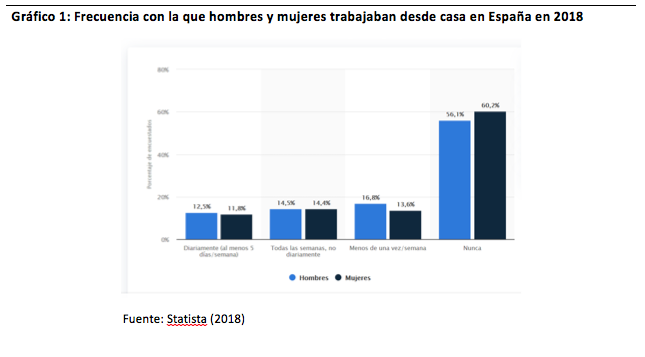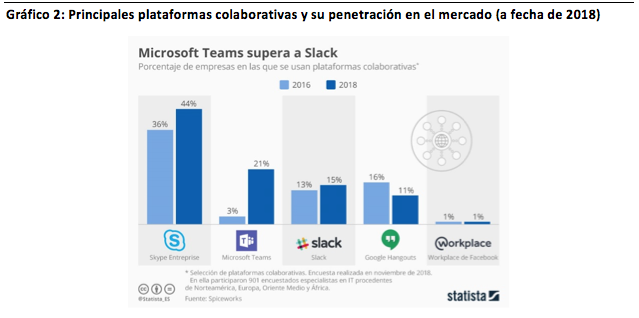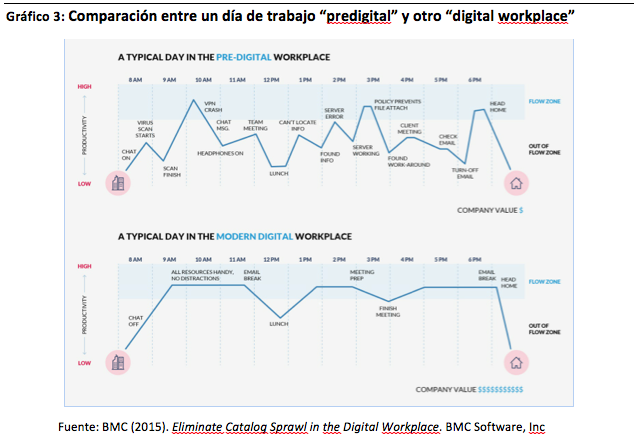Teleworking as tool to combat the coronavirus
By Alberto Andreu Pinillos (Phd) Director Executive of the Executive Master in Human Resources and Digitization, University of Navarra

The coronavirus crisis is shaking everything up: it has already been declared a global pandemic. And this is going to radically alter our day-to-day lives in many ways. In the workplace, the recommendation of the authorities to opt for teleworking whenever possible, is posing many challenges for all companies, both large and SMEs. The challenge, moreover, is not only technological, but also cultural, because it involves a change of habits that, moreover, can be prolonged in time.
In view of this status, the University of Navarra's Masters in Personnel Management Service (MDPO and Executive in Human Resources and Digitalization) thought it might be useful to offer some reflections on how to approach this status. And let us not forget that we are facing a full-fledged crisis: of health (above all) and of business continuity.
First. It should be borne in mind that not all companies, nor all positions of work of the same business, can be performed by teleworking. What can be done by teleworking is everything associated with intellectual activities, related to research, development of science and technology projects, innovation and information, consultancy service... (i.e., what is known as the quaternary sector). In the rest of the sectors (primary, secondary, tertiary and quinary) telework applies only to some functions related to management. The data for Spain, in fact, shows that, at present, widespread teleworking is an exception, as can be seen in Figure 1, since more than 55% of workers (56% men and 60% women) have never teleworked.

Second. Teleworking is more than just being connected by e-mail or telephone. Therefore, companies must be able to provide their employees with collaborative tools for this purpose, known as the digital workplace concept. These are platforms that offer integrated email, instant messaging, chat, project planning, enterprise social networks, virtual meeting tools, human resources applications, access to internal systems, etc. Figure 2 shows the main collaborative platforms and their market penetration (as of 2018).
It is true that large companies already have these subject of solutions. In the case of SMEs with fewer resources, they can resort to open platforms, from Slack (paid) or Trello (free) to WhatsApp groups, through LinkedIn, Facebook, or Skype.

Third. The business as an entity has to make itself present to its employees on a daily basis. In a normal day to day, when a person enters the headquarters of its business, by the mere fact of passing through the door, the company exists for its employees. The challenge in teleworking situations, especially if it is maintained over time and involves the physical closure of the offices, is that the business (through its Director or its HR manager ) has daily communication with its employees, not only to transmit in a transparent way the progress of operations, the health of its employees or the day to day business, but above all to avoid the feeling of "withdrawal" and promote the sense of belonging. This communication can be done in many ways, from a simple e-mail to a voice grade , through daily videos, podcasts, etc. The important thing is to send generalized messages to all employees.
Fourth. Managers and team managers have to organize projects with a specific planning. The main burden of teleworking lies precisely in the team managers, because on them depends the day to day business and the submission of projects to customers. For this reason, beyond the daily communications of business as such (of a more general nature), the managers have a greater communication challenge (of a more operational nature). That is why it is advisable to create specific groups of work on line with all the direct team and, if necessary, with each group by typology of project.
Although in each case it is different, two situations can be differentiated. On the one hand, if mass teleworking was not installed on a regular basis in the business and, in addition, the offices have been Closed , it is a matter of creating a new subject of habits; for example, it is convenient to organize and follow up the progress of the projects with the whole group once or twice a day and, preferably, at fixed times. On the other hand, in the case that teleworking had already started before and the habits were already generated, regular contacts every three or four days, for all the group and one to one, can be enough.
Fifth. Professionals have to create new habits and routines. The ideal is to organize the work as a regular work workshop (Figure 3 sample the comparison between a day of work "comparison between a day of work "predigital" and another "digital workplace"). But in the case of the coronavirus, where schools have been suspended, working with children at home will be more complicated, so it may be necessary to modify routines and concentrate the activity that requires more concentration in the hours when the children are asleep. It may also be useful to write down the list of tasks that correspond to you individually, to have the feeling of accomplishment.

Little else. What does seem clear is that we are facing an immense challenge. But what also seems clear is that we are facing an enormous opportunity: the opportunity offered by technology to consolidate a new subject of work using collaborative platforms, from home... or from anywhere in the world. It is also clear that working also has a large social component that can hardly be replaced; in fact, I think it is a good thing that, for example, if offices are closed for a long period of time, team leaders can meet with their people in parks or open places from time to time to reinforce the idea of group. But, perhaps, the coronavirus is the trigger to accelerate a change in the way we work that allows for an optimal mix of human-to-human and human-to-machine interactions. In fact, many digital native StartUps, with people dispersed in several countries, have already been working this way for a long time: without offices, meeting once a month in a different city, and working on a daily basis with collaborative platforms.




